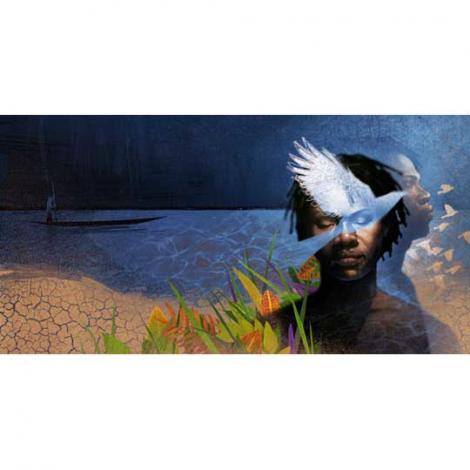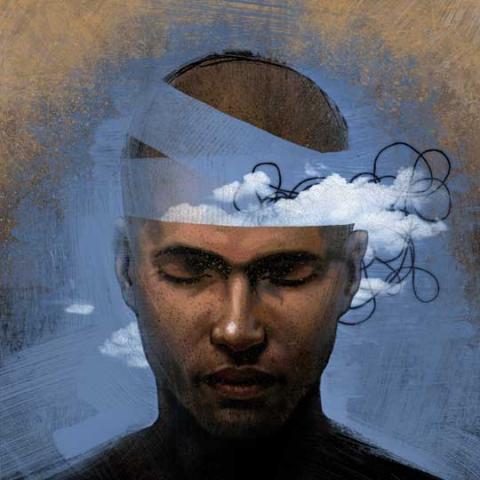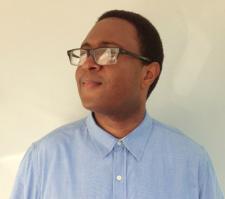My essay, "Rays," appears in the 301.2, Spring 2016, issue of North American Review. I'm particularly happy about the publication of this personal narrative. "Rays" affirms my hope that the prose I'm most proud of might also have value to others. This piece inspired me to write more creative-nonfiction and inevitably led to my book-length collection, Harbors, forthcoming from Awst Press in Fall 2016.
The process of crafting “Rays” made me more comfortable in exploring other methods of expression beyond the genre of fiction and helped me answer some nagging questions about my identity as a writer. While constructing this essay, I entered into an internal dialogue—a call and response between my ego, superego, and a few of my literary heroes via quotes from search engine results.
Q: How to begin and where to start?
Stephen King: “A little talent is a good thing to have if you want to be a writer. But the only real requirement is the ability to remember every scar.”
Donald Quist: For weeks I agonized over how to begin an essay about my childhood. An editor at one of my favorite online journals had invited me to contribute a nonfiction piece to a series about youth and I eagerly accepted, forgetting momentarily how often talking or writing about myself makes me uncomfortable.
I spent a day idly twirling a pencil between my fingers and staring at a blank sheet of notebook paper, fretting. I knew I wanted the essay to be a specific representation of my experience but also universal. And, I knew I didn’t want to give an overview of my entire childhood, believing it might bore the reader. I searched my past for contained incidents with a clear arc that could serve as a relatable reflection of my formative years. While thinking, I must have started to study the lines on the back of my hand. I closed my palm into a fist and began counting the scars: one, two, three, four, five. The biggest wound covers most of my pinky knuckle. I got the mark at the age of ten and it has stayed with me for over twenty years.
Pushing the pencil across the empty page I scribbled, “I have a scar, a scaly callus on my right pinky knuckle from when I cut my hand on Ray Nelson’s teeth.” I leaned forward in my chair and read the sentence aloud. It sounded good enough to me.
I sighed, somewhat relieved. I had discovered a point of entry.
Q: Who am I and why should anyone care?
Jamaica Kincaid: “I come from, really, nowhere, and for me, the fiction and the nonfiction, creative or otherwise, all come from the same place.”
E.L. Doctorow: “There is no longer any such thing as fiction or nonfiction; there's only narrative.”
Donald Quist: As the story progressed a number of doubts persisted. Firstly, I never considered myself a nonfiction writer. Even when I’ve worked as a freelance journalist, I still identified as a fiction author. My stories often have true elements and some are autobiographical, but I felt like a phony trying to write an essay about my childhood when I have friends who hold degrees in the genre. I worried the real nonfiction authors would deem me a fraud.
Secondly, I am a relative nobody. I had difficulty believing that anyone, besides friends, family, or the few people who have read my first short story collection, might care to know anything about me. Having read a lot of grisly memoirs and biographies, my youth as a bookish overweight black nerd didn’t seem so bad, comparatively.
It quickly became clear to me, for the essay to succeed, it would have to be about more than myself. I began to approach the piece the same way I would a short story. I decided I should try to use the anecdote surrounding the scar I had received in elementary school to highlight universal issues like race, education, and economic disparities.
Once I made this choice, it became easier to plot the structure of the essay, and I became more assured in its tone and voice. By giving the piece a broader focus, it didn’t seem to matter whether the reader knew me or not. With a direction for the essay, I realized the rules of narrative are interdisciplinary. By the time I completed my first draft, I felt a lot less anxiety about working in a genre in which I had less experience.
Q: So what then? When is it okay to say no?
Richard Wright: “The artist must bow to the monster of his own imagination.”
I submitted my essay, “Rays”. The editor admitted he had expected something else. He wanted a wider evocation of my entire childhood, not a single defining moment. The editor encouraged me to frame the essay with an adult first person narration looking back over several years to offer a presumably wiser perspective and clearer explanation of what I had learned.
I considered this suggestion carefully and read over the piece several times. I wanted desperately to please the editor—I greatly admire his writing and knowledge of craft—and I enjoy seeing my name in print. However, with each reading of my essay I became more confident with the story I wanted to tell. Fearing these proposed edits would make the piece less compelling and overtly moralistic, I ultimately decided against the changes the editor requested. I thanked him for his consideration and started looking for another journal. North American Review accepted my essay a few months later, validating my creative intuition.
Despite my initial uncertainty, “Rays” features some of my best writing. Finding such a good home for this piece encourages me to continue practicing other forms of written expression, and not to dread the narratives that prompt me to ask hard questions, because now I know I can trust myself to uncover the answers.
Illustrations by Matt Manley. Matt has been working as a freelance illustrator for over twenty years. His illustration is primarily figurative and symbolic with surrealist leanings, and past client work includes editorial, corporate, medical, book, and higher education. Though in the end his work is technically digital collage, the process integrates both traditional and digital media. Collage elements are original oil paintings and drawings, with occasional scanned found objects and photos added to the mix, all united in Photoshop .




